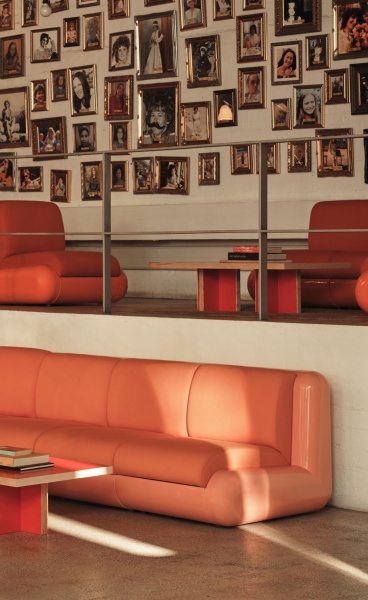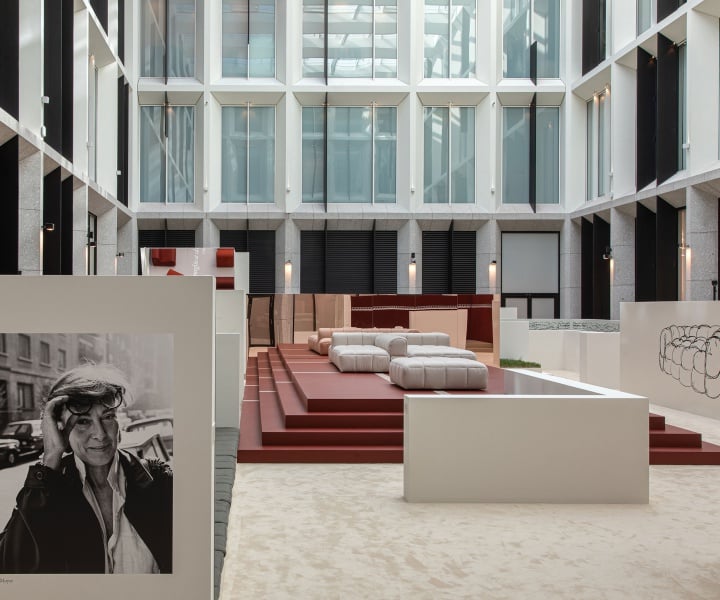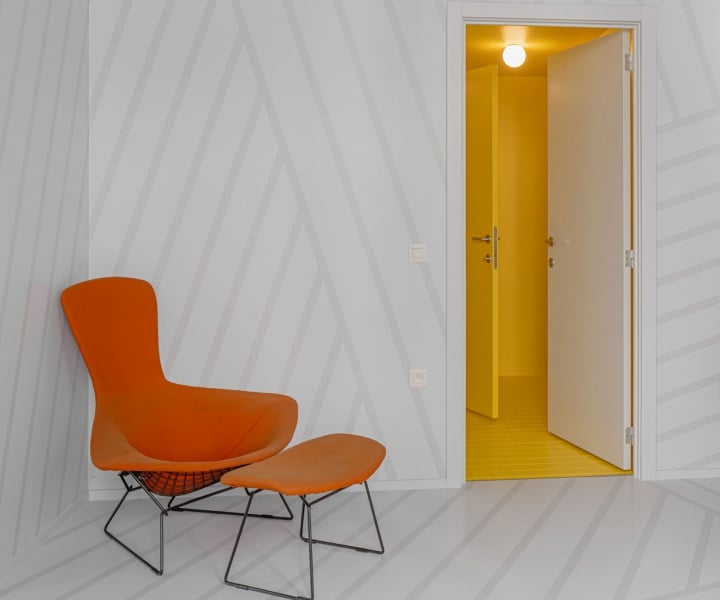Project Name
The Library at the Želiv MonasteryPosted in
Industrial / Product Design, Lighting DesignLocation
Area (sqm)
116Completed
2023| Detailed Information | |||||
|---|---|---|---|---|---|
| Project Name | The Library at the Želiv Monastery | Posted in | Industrial / Product Design, Lighting Design | Location |
Želiv
Czech Republic |
| Area (sqm) | 116 | Completed | 2023 | ||
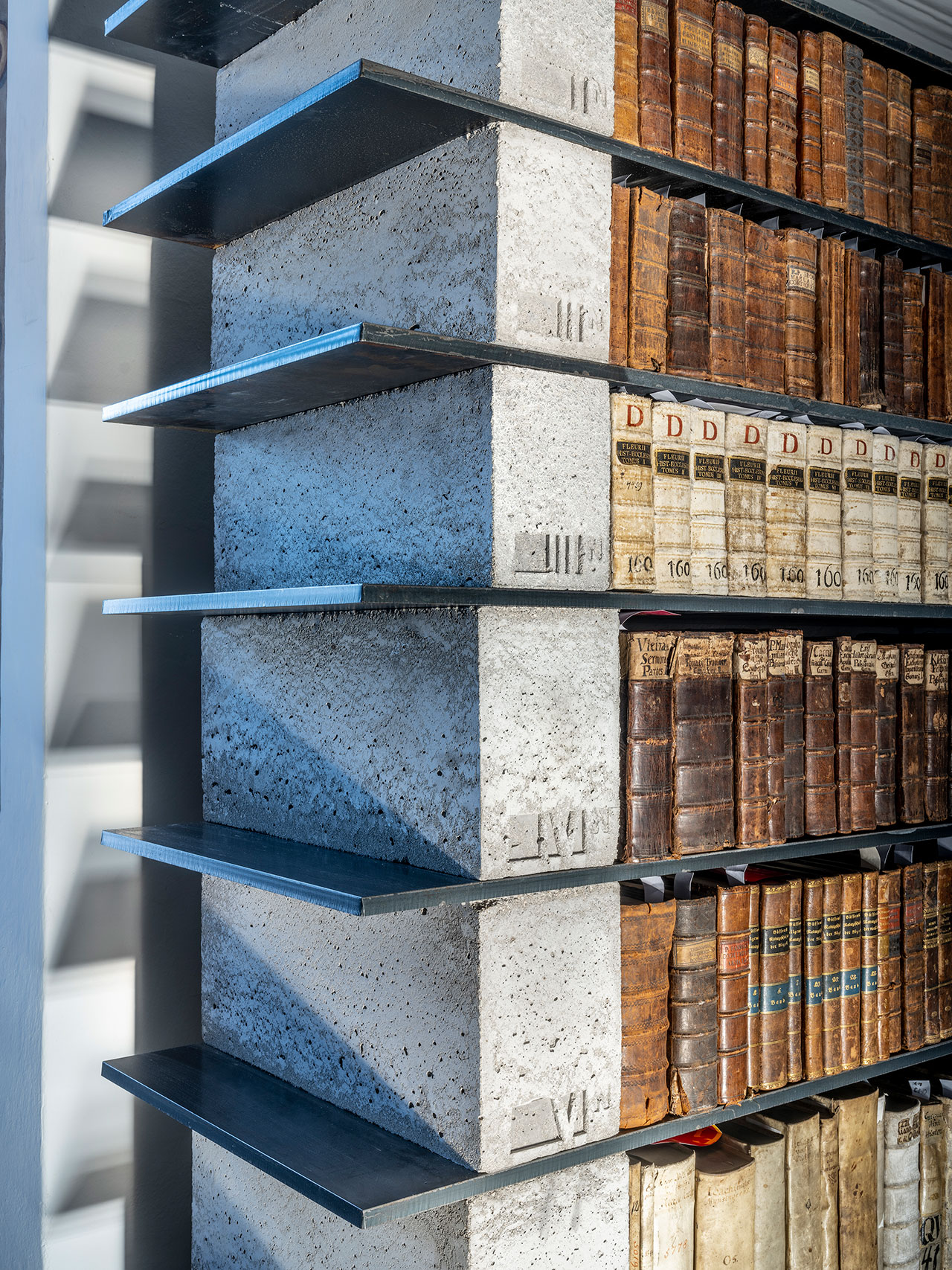
Photography by Ales Jungmann.
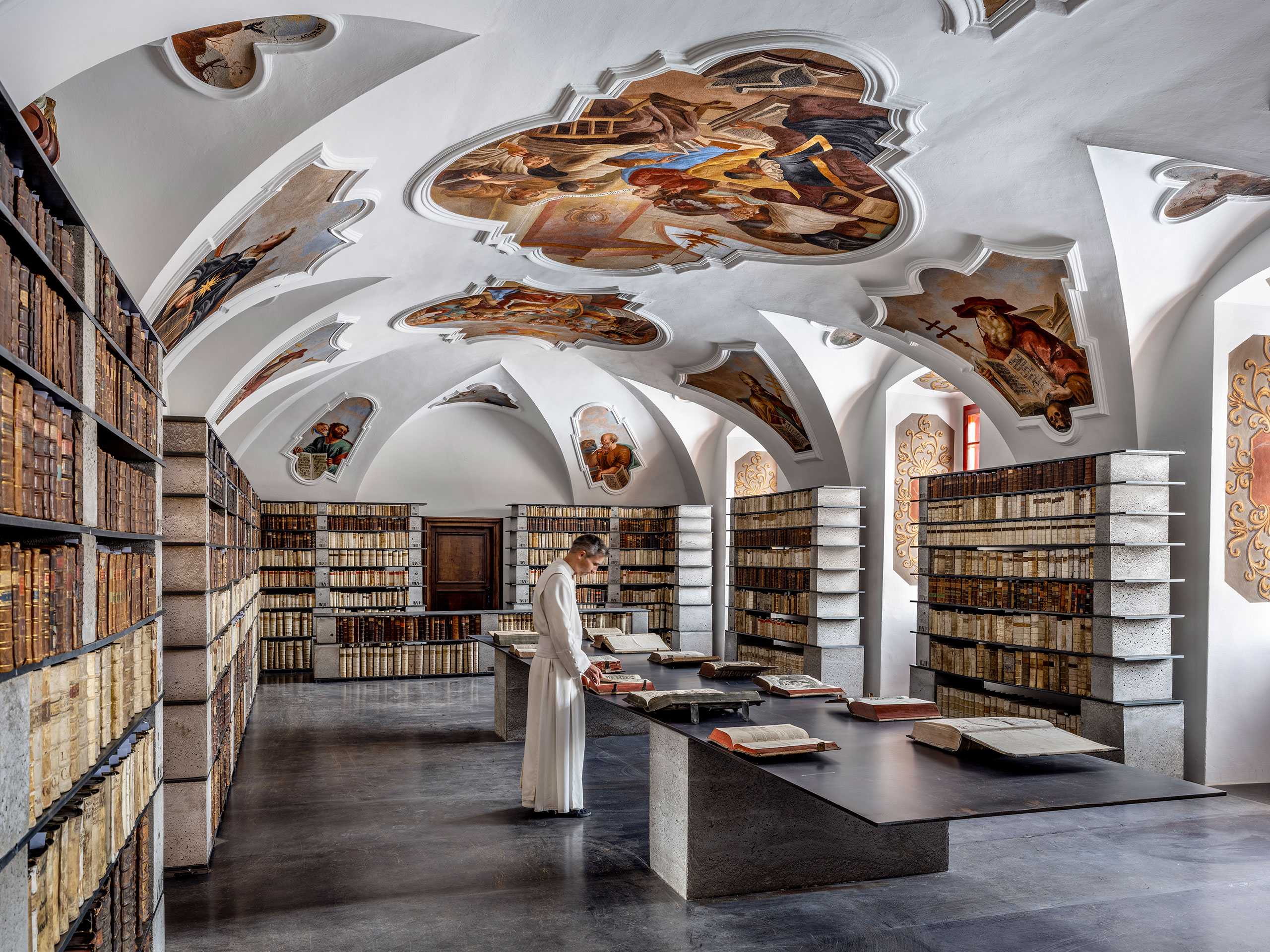
Photography by Ales Jungmann.
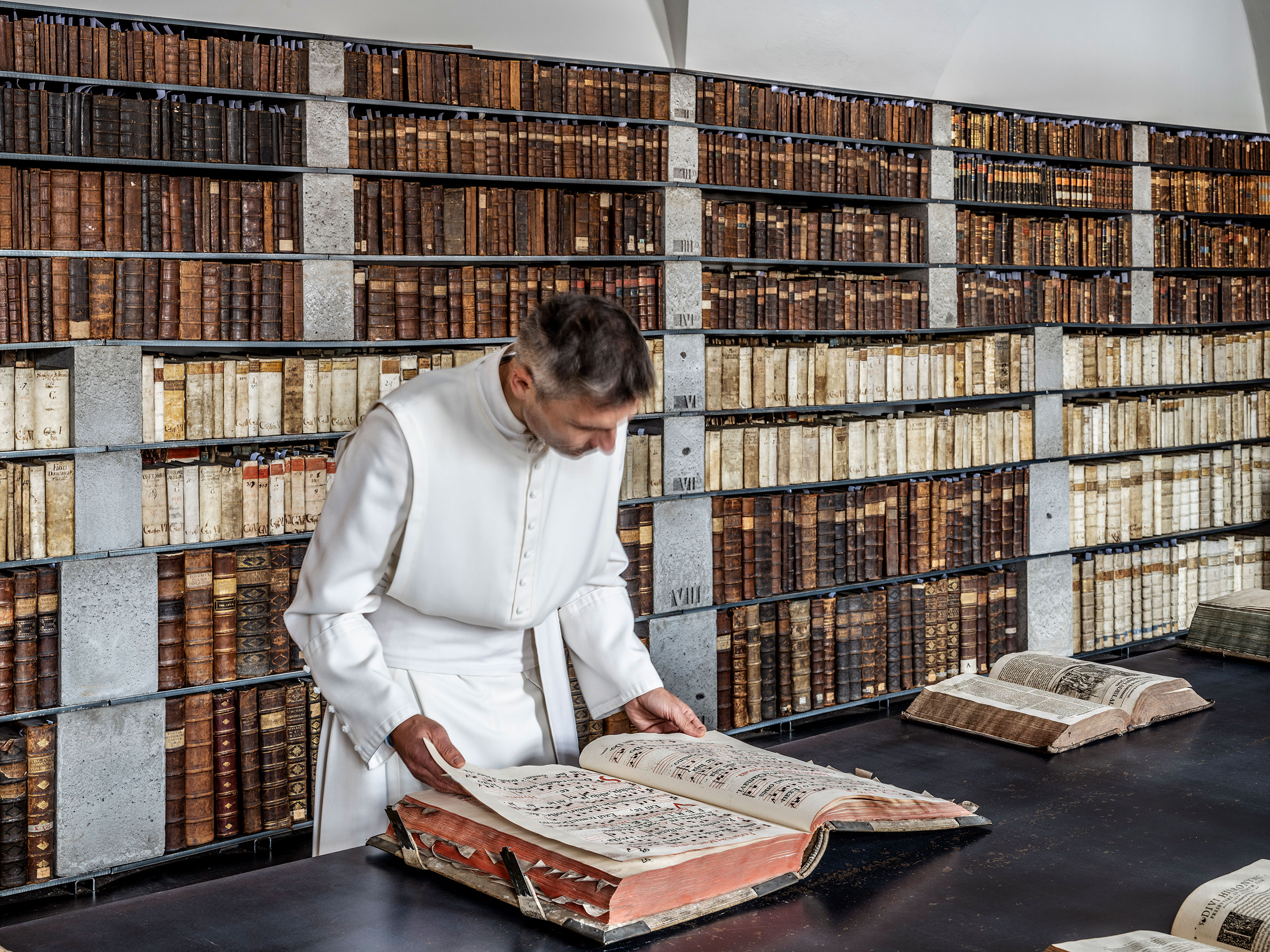
Photography by Ales Jungmann.
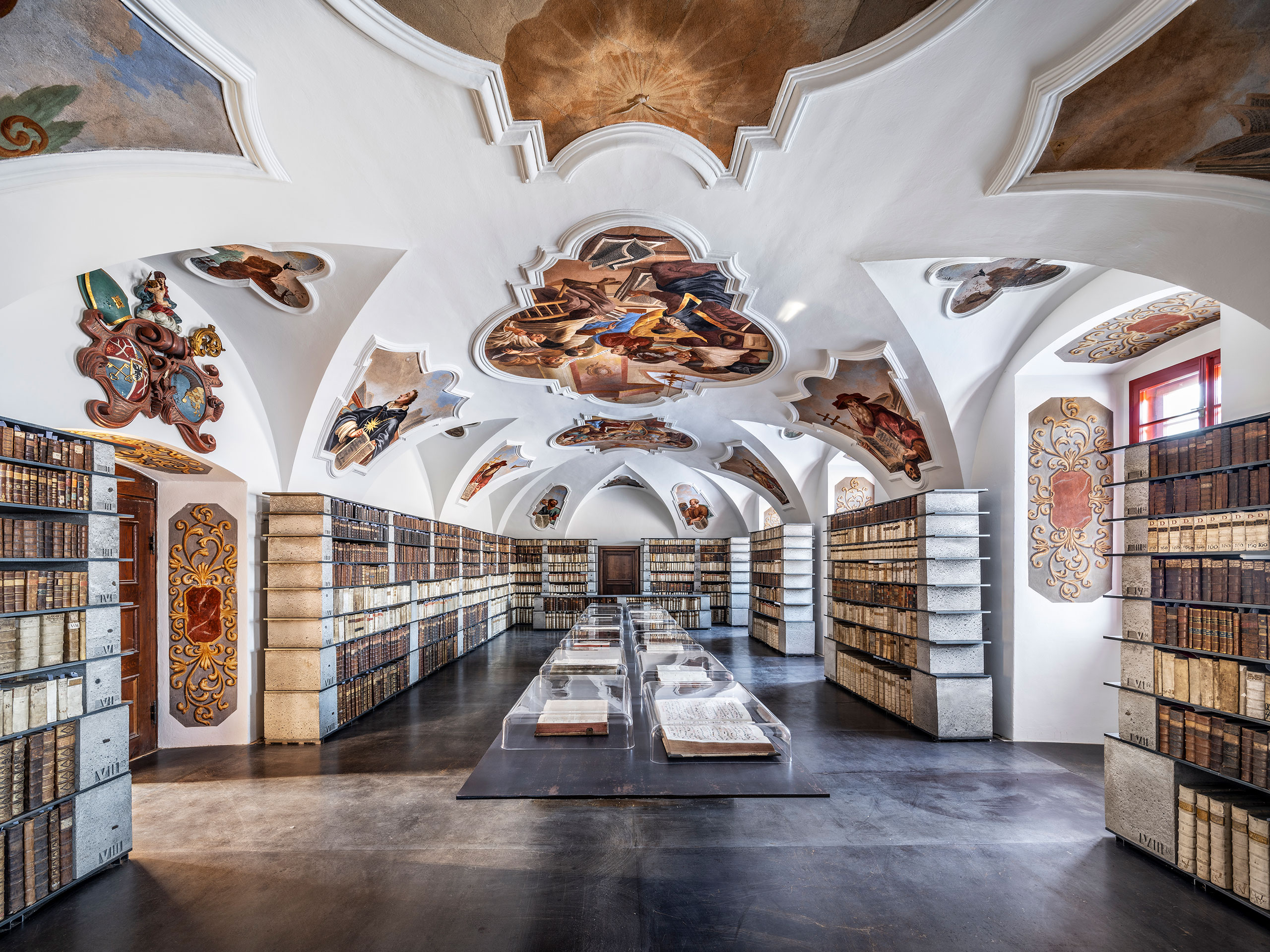
Photography by Ales Jungmann.
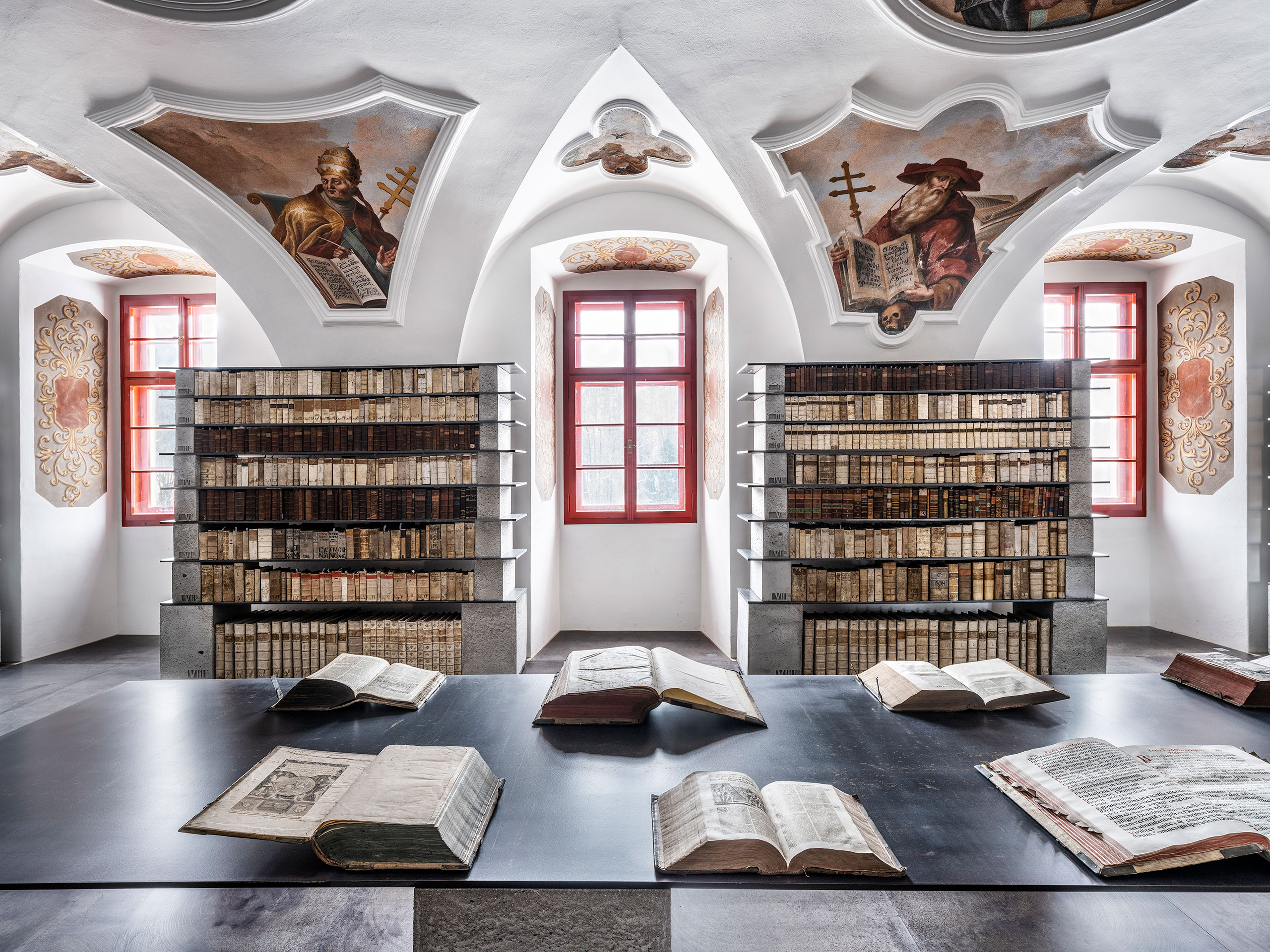
Photography by Ales Jungmann.
Originally built in the 12th century for Benedictine monks, the Premonstratensian monastery has a turbulent history including sieges and fires as well as multiple restorations, most notably in the 18th century by the Czech architect of Italian descent Jan Santini Aichel. While under communist rule in the 1950s, the building was repurposed as an internment camp for the clergy, until its religious role was reinstated in 1991. As part of the monastic complex, the library is housed in a large space that bears the hallmarks of Santini Aichel’s Baroque-Gothic aesthetic, namely beautiful ceiling frescoes. In contrast to the frescoes which have fortunately been preserved, the original wooden bookcases have not. Enter Šépka architects, who rather than attempt to recreate them, designed a unique shelving system, tailor-made to the library’s programmatic requirements and spatial constraints.

Photography by Ales Jungmann.
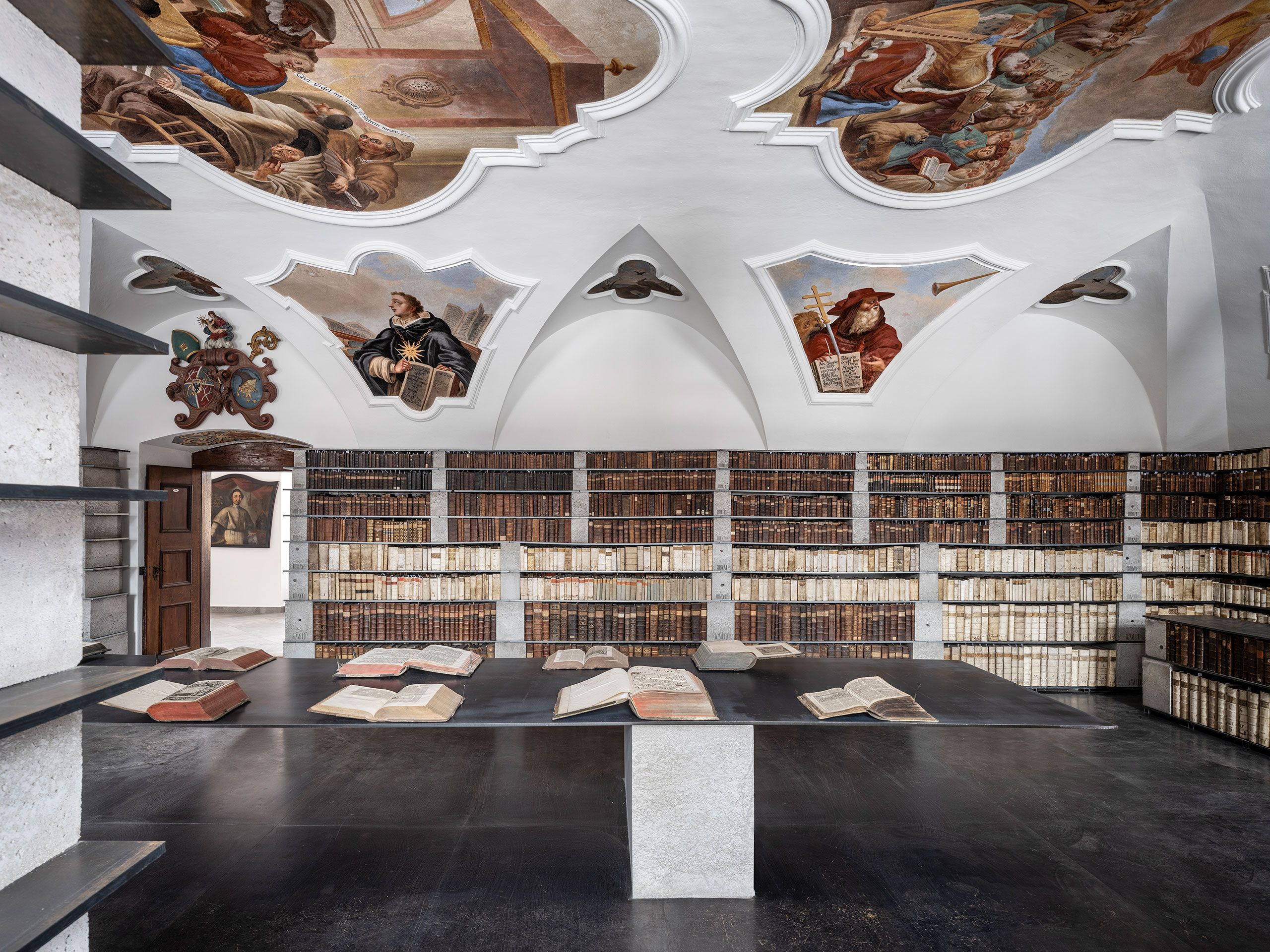
Photography by Ales Jungmann.
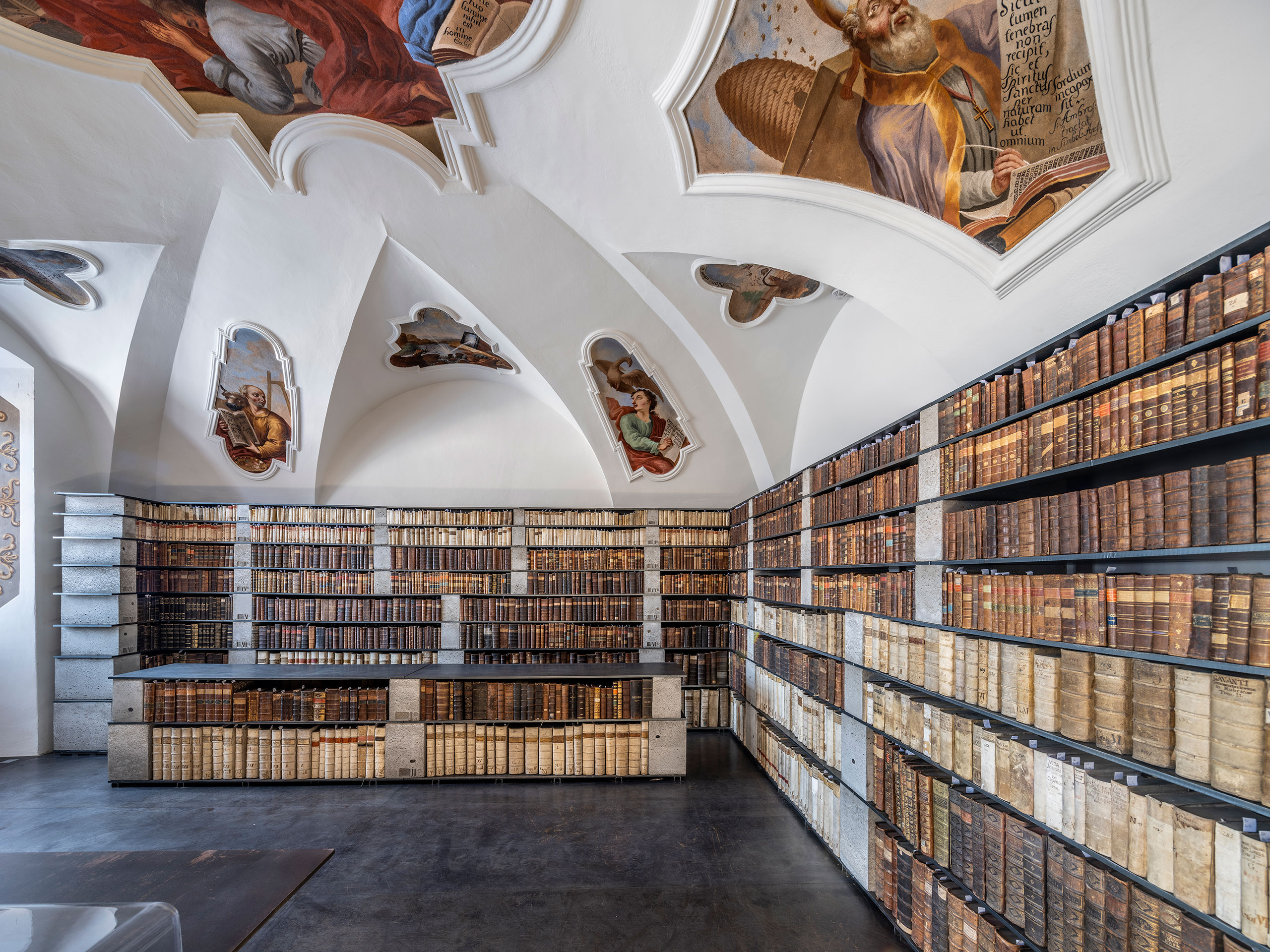
Photography by Ales Jungmann.
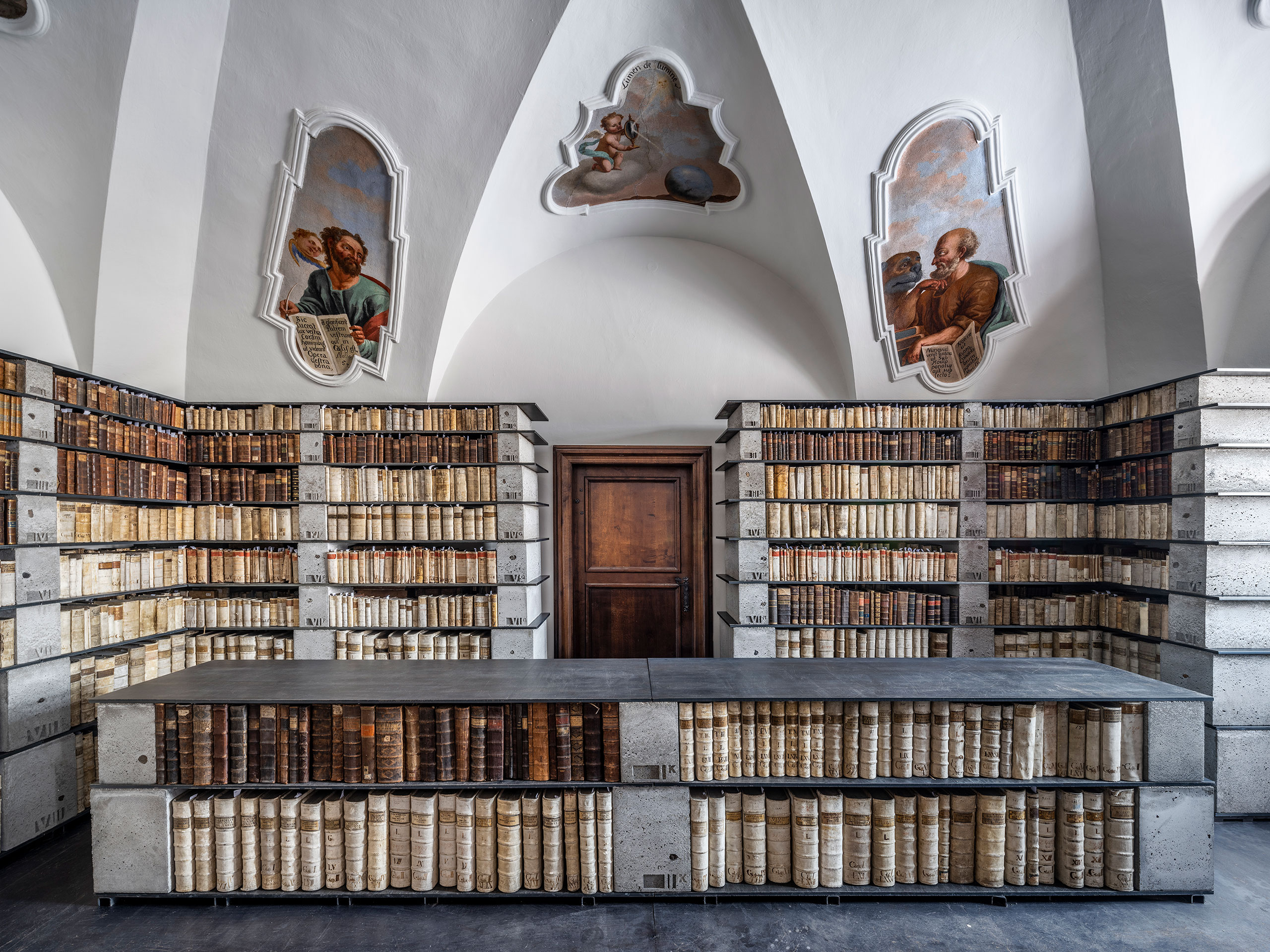
Photography by Ales Jungmann.
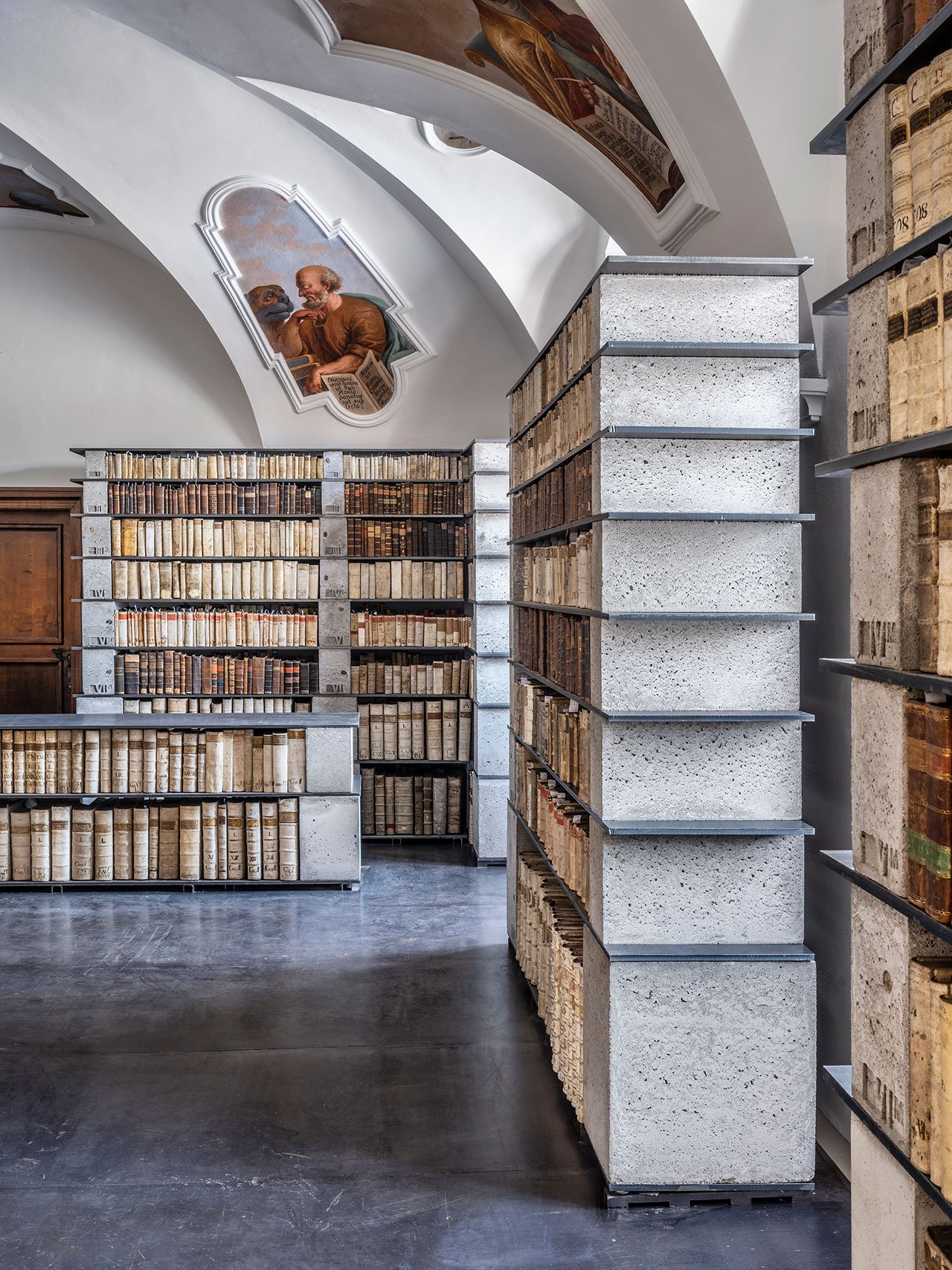
Photography by Ales Jungmann.
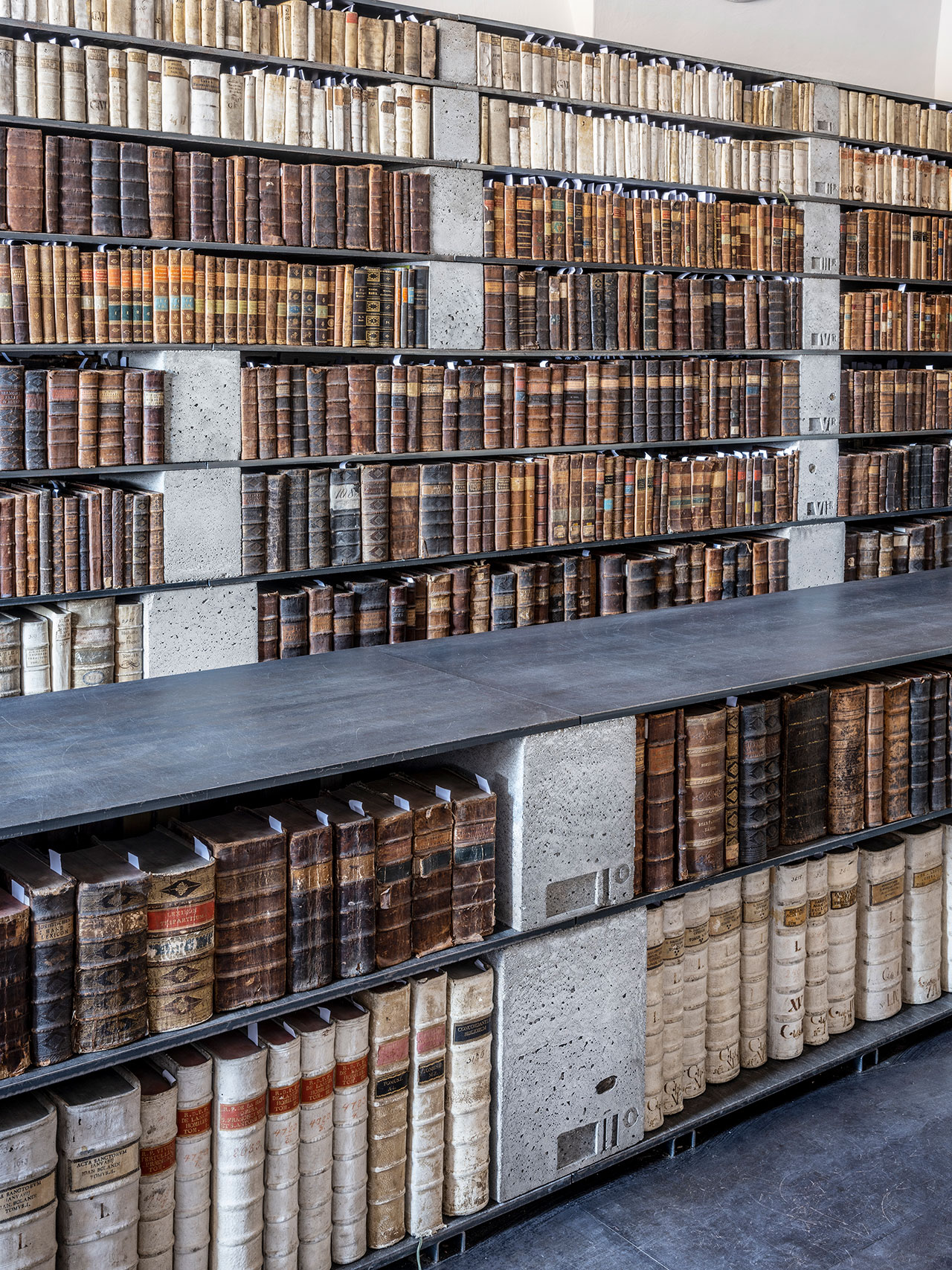
Photography by Ales Jungmann.
Designed as a composite system of concrete supports and sheet metal shelves, the units are robust enough to carry the weight of the books yet simple enough to have a minimal visual impact. The hefty construction also ensures structural integrity without needing to anchored to the historic building’s fabric while their height stays clear of the room’s baroque ornamentation reaching just below the vaulted ceiling. Cast in-situ, the concrete supports diminish in size starting with the largest at the bottom to the smallest at the top with shelf heights tailored to accommodate the varying dimensions of the books from the tallest to the shortest. Also incorporating the golden ratio in the sizing of their width, the stacked concrete blocks imbue the space with a harmonious sense of balance. In the middle of the space, an 8-metre long concrete and steel table showcases a series of rare books underneath glass domed covers. “Our intention was to symbolically create the impression of a kind of feast at the table”, the architects explain, “as the monastery refectory is located directly under the library.”
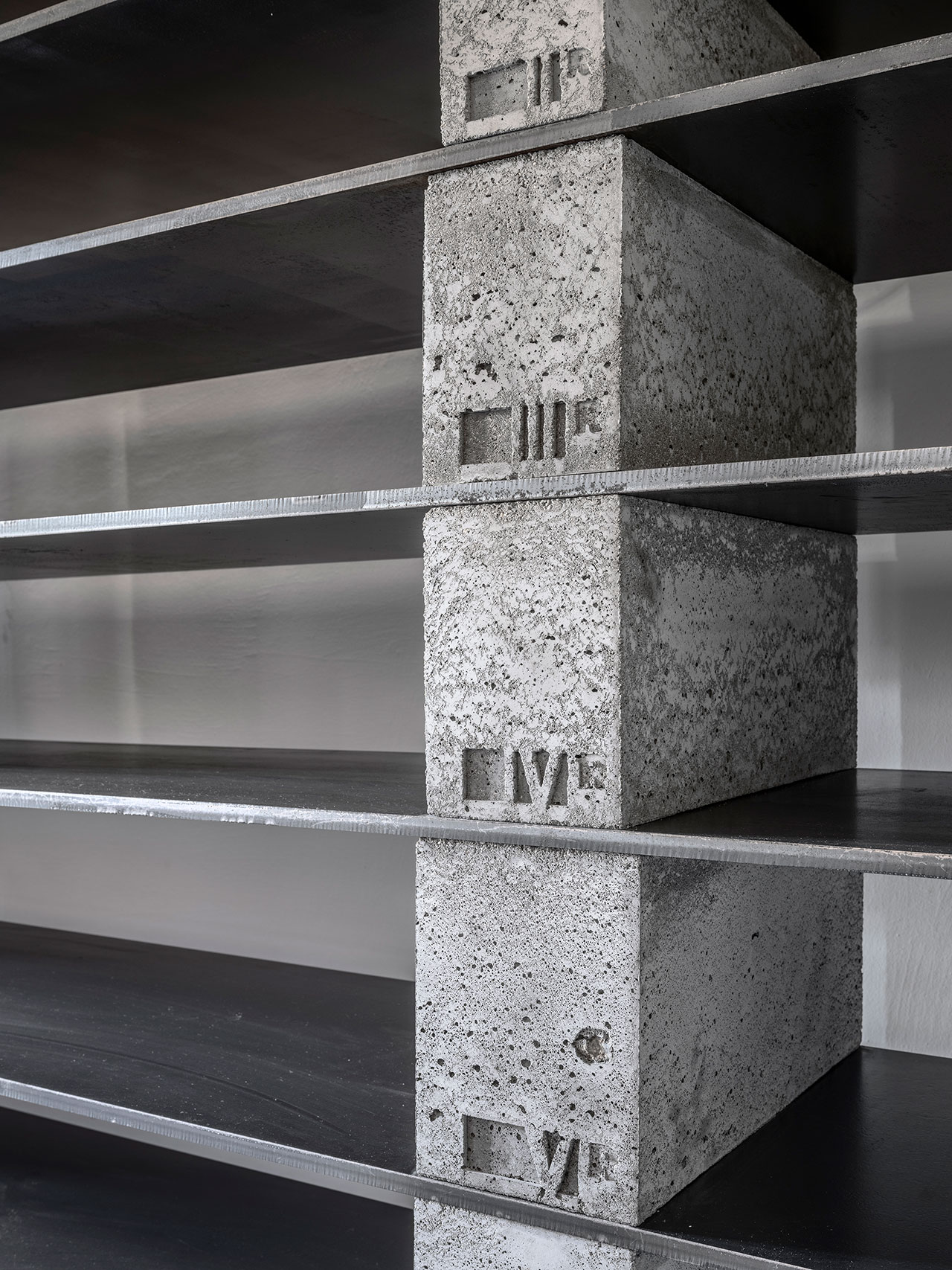
Photography by Ales Jungmann.
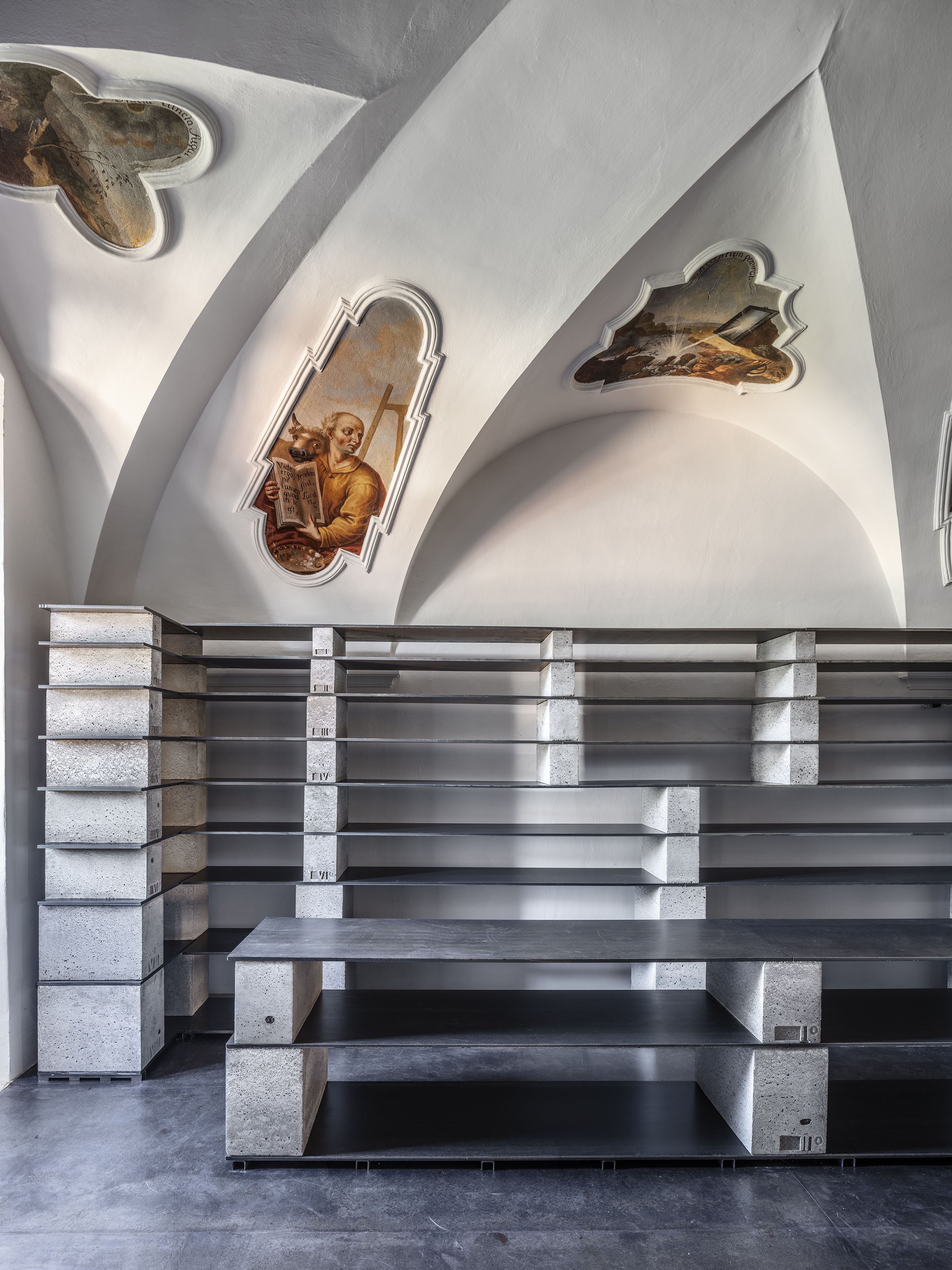
Photography by Ales Jungmann.
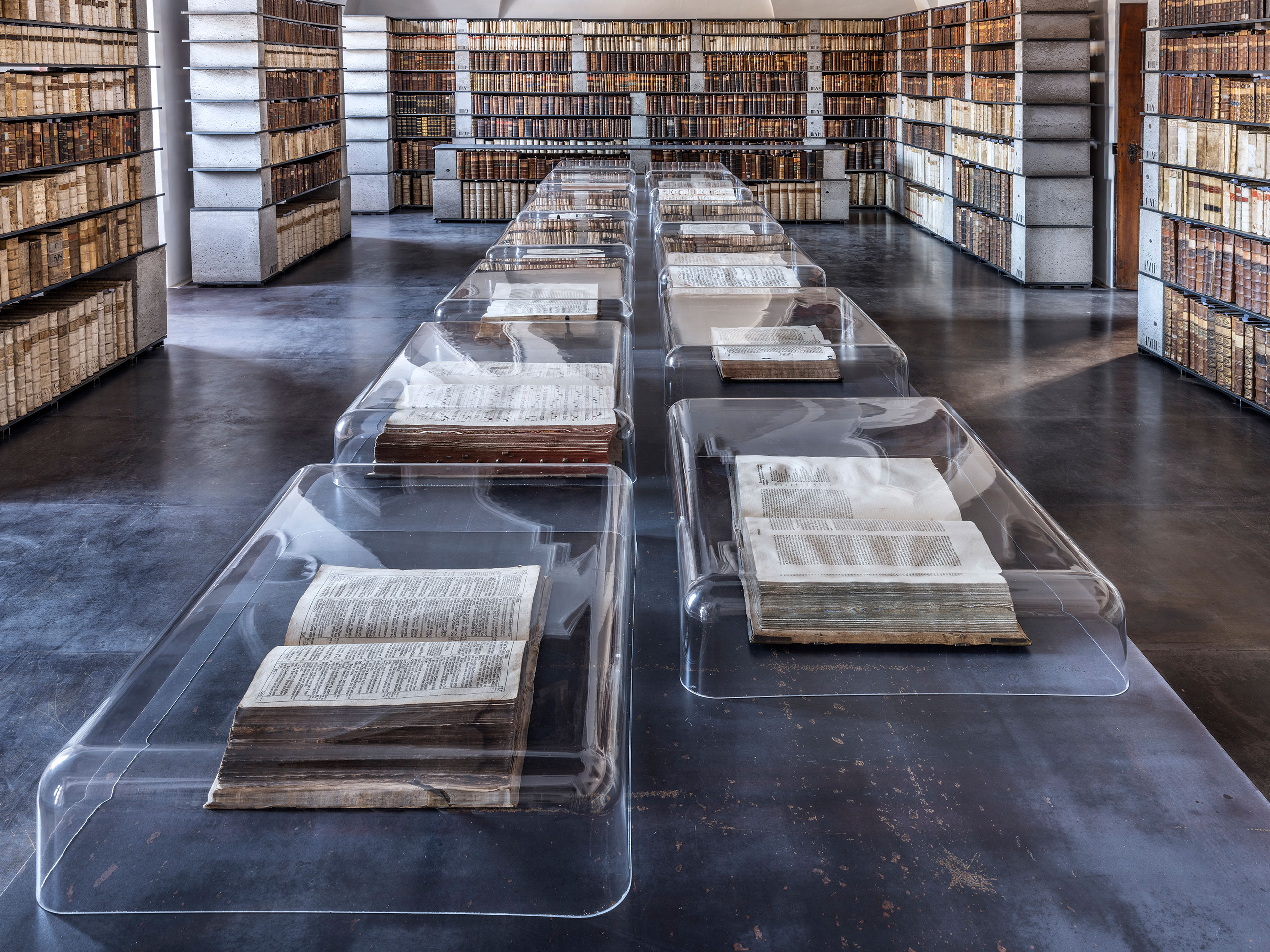
Photography by Ales Jungmann.
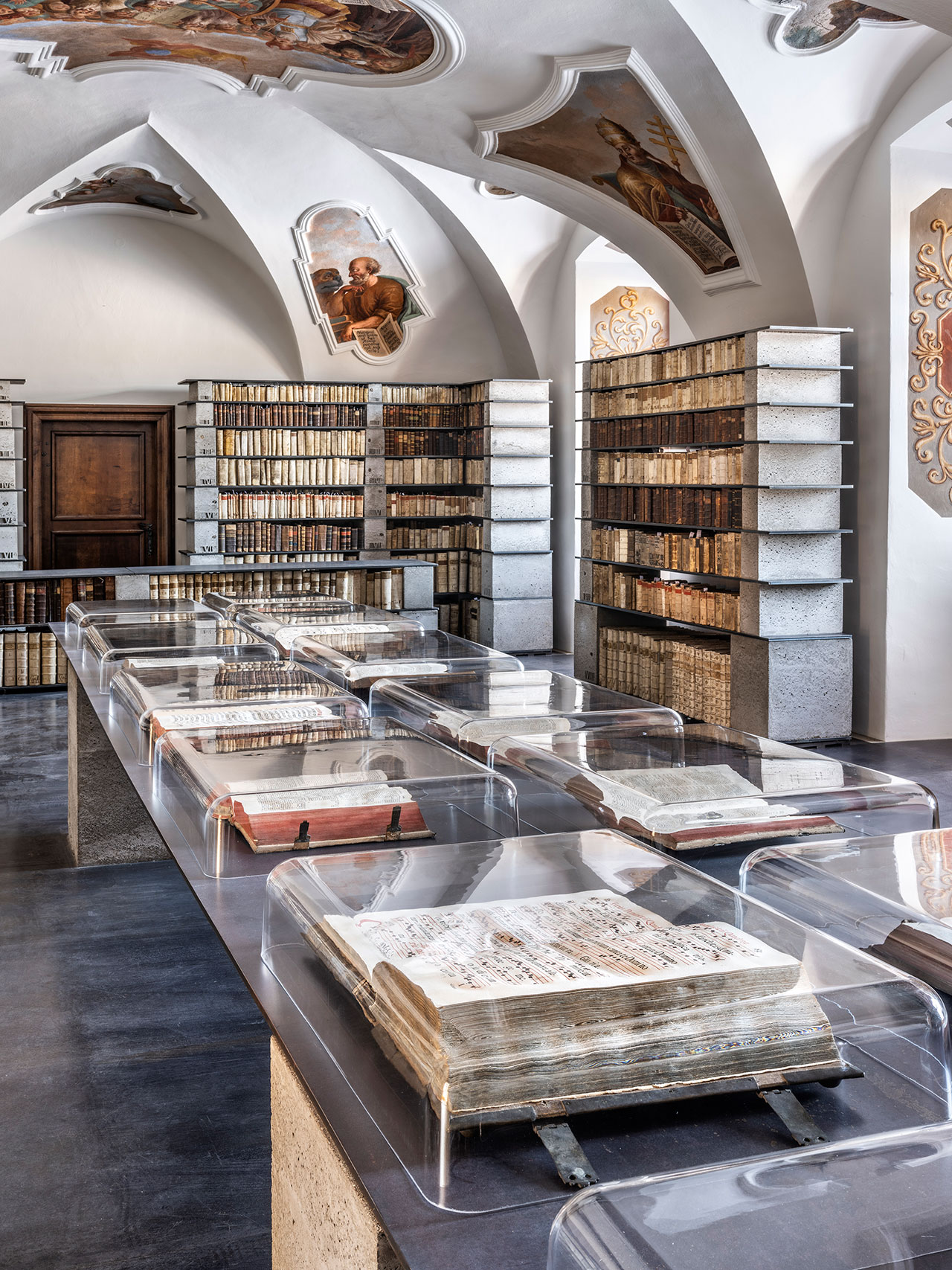
Photography by Ales Jungmann.
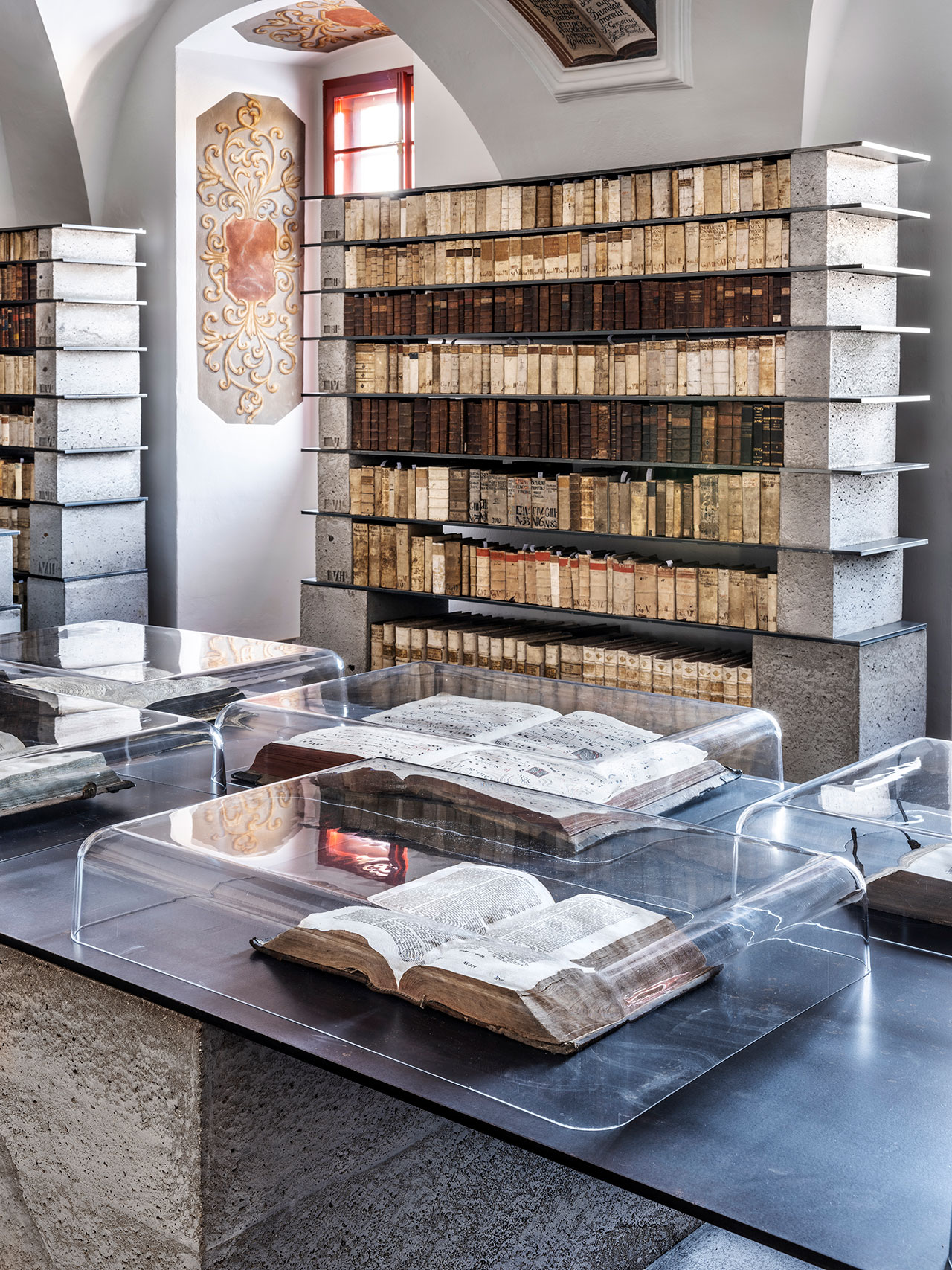
Photography by Ales Jungmann.
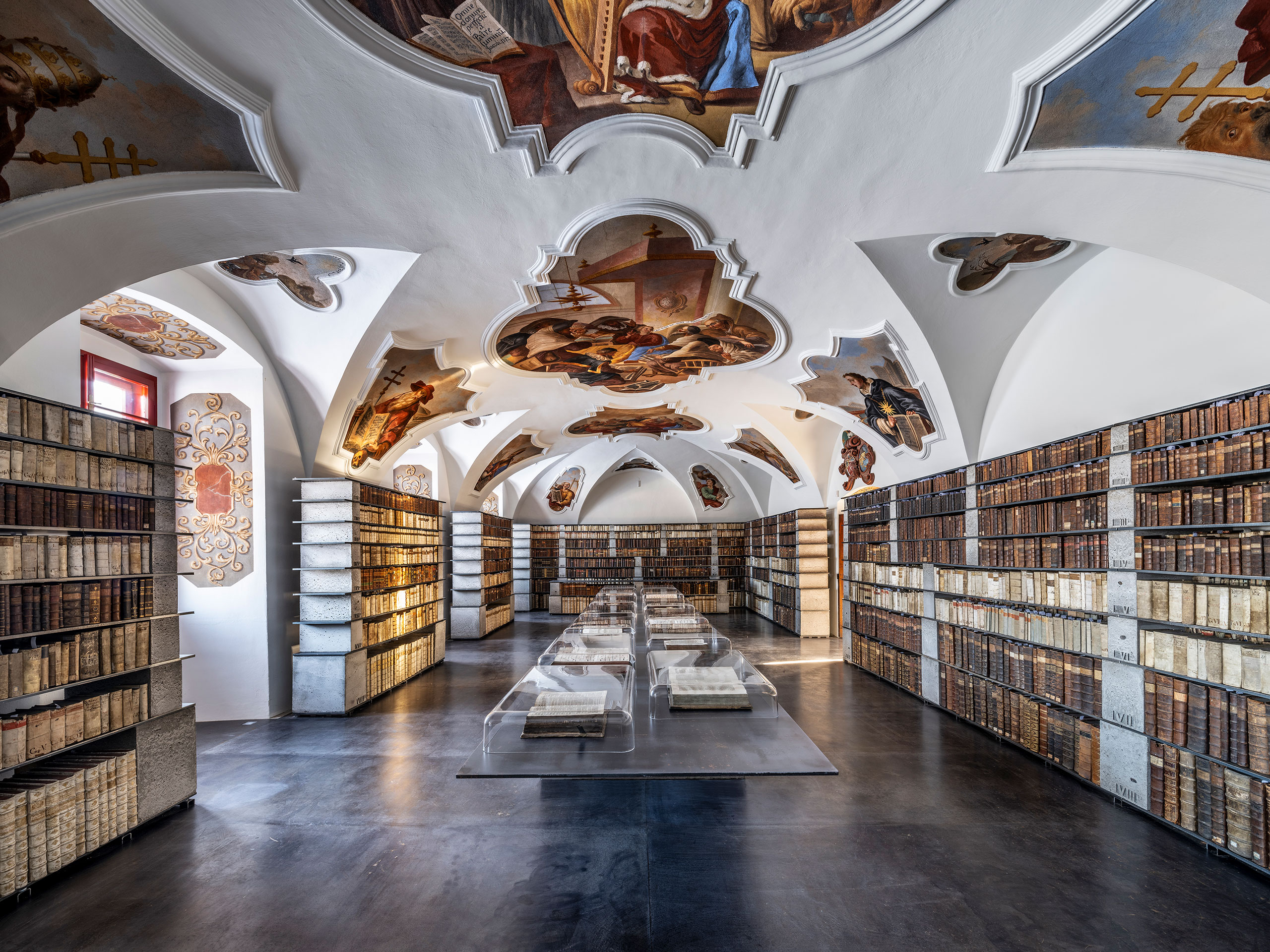
Photography by Ales Jungmann.



